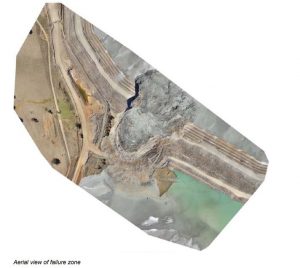Newcrest shares hit after dam wall collapse

Shares in Newcrest Mining fell more 4.6 per cent Monday after the miner declared that its performance for fiscal 2018 will be definitely affected by the breach of a tailings dam wall at its Cadia gold mine.
“Whilst it is too early in the evaluation and recovery process for Newcrest to provide an indication of the extent to which FY18 production, capital and cost guidance will be impacted, this event will adversely impact guidance for FY18 given the contribution of Cadia to the overall outcomes of Newcrest. Further updates will be provided to the market when available,” Newcrest said in a press release.
Located in New South Wales, approximately 25 kilometres from the city of Orange, Cadia accounts for a large share of the company’s ore production. Last Friday, operations had to be shut down after a section of the northern dam wall collapsed into the southern tailings dam releasing a slurry of finely ground rock, water and what has been described as “a low level of benign processing reagents.”

Aerial view of the wall failure of the Northern Tailings Storage Facility at Cadia Valley Operations. Photo by Newcrest Mining.
According to Managing Director and Chief Executive Officer, Sandeep Biswas, the firm is in the process of investigating what caused the failure while, at the same time, carrying out a geotechnical analysis on possible repair options. “Work has also commenced on multiple recovery scenarios including alternative tailings locations such as the old Cadia Hill open pit, which is already the subject of a prefeasibility study to assess suitability for tailings disposal,” Biswas’ statement reads.
The CEO’s brief emphasizes that Cadia uses a gravity circuit to recover gold and not a chemical reduction process. In other words, gold extraction in the area does not involve the use of substances such as mercury, cyanide and arsenic.
Australia’s biggest gold miner said management is working together with provincial regulators and independent geotechnical consultants to understand and solve the situation.
The dam wall collapse comes just weeks after Newcrest reported a 58 per cent fall in underlying profit to $116 million for the first half of fiscal 2018.
More News
{{ commodity.name }}
{{ post.title }}
{{ post.date }}




Comments